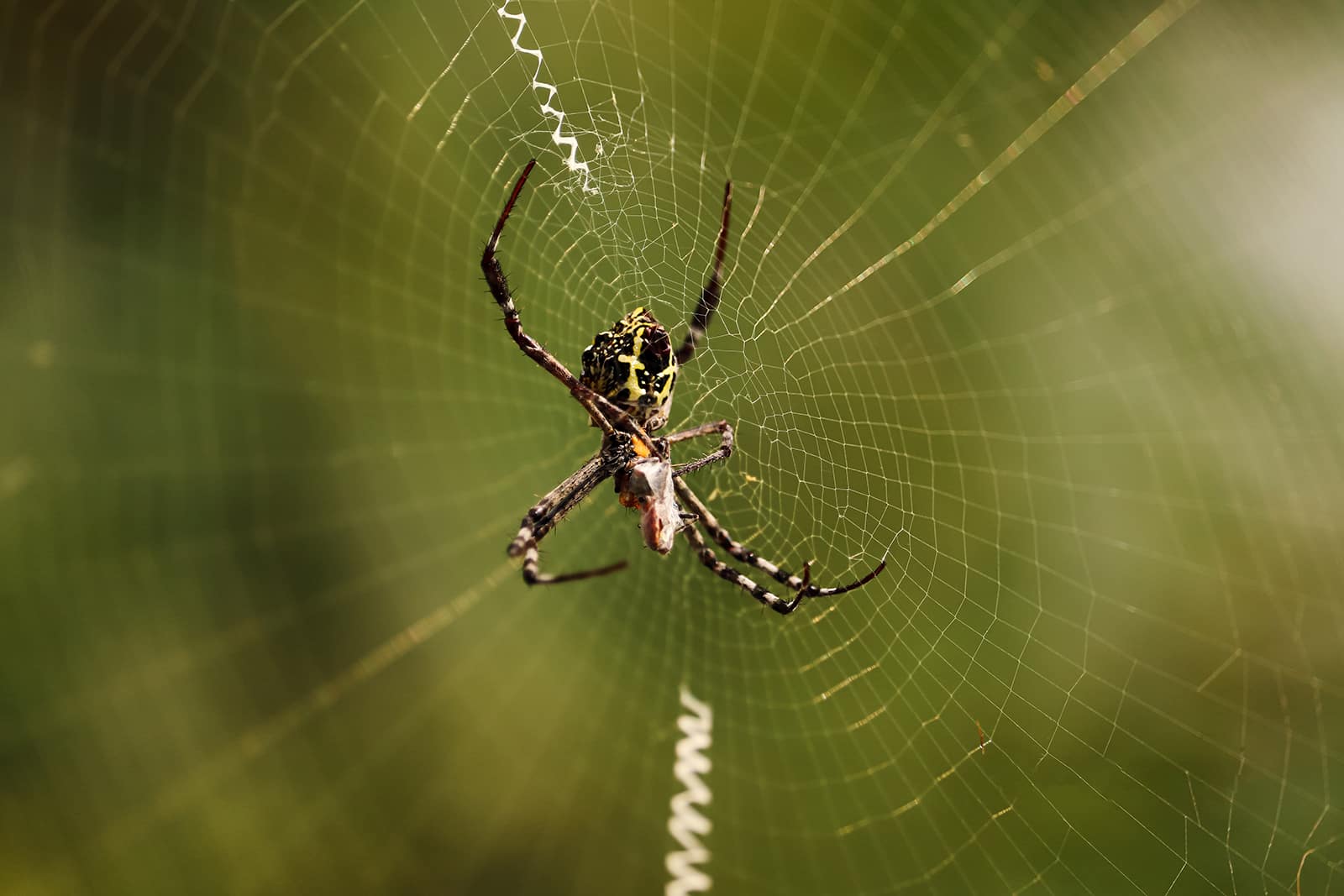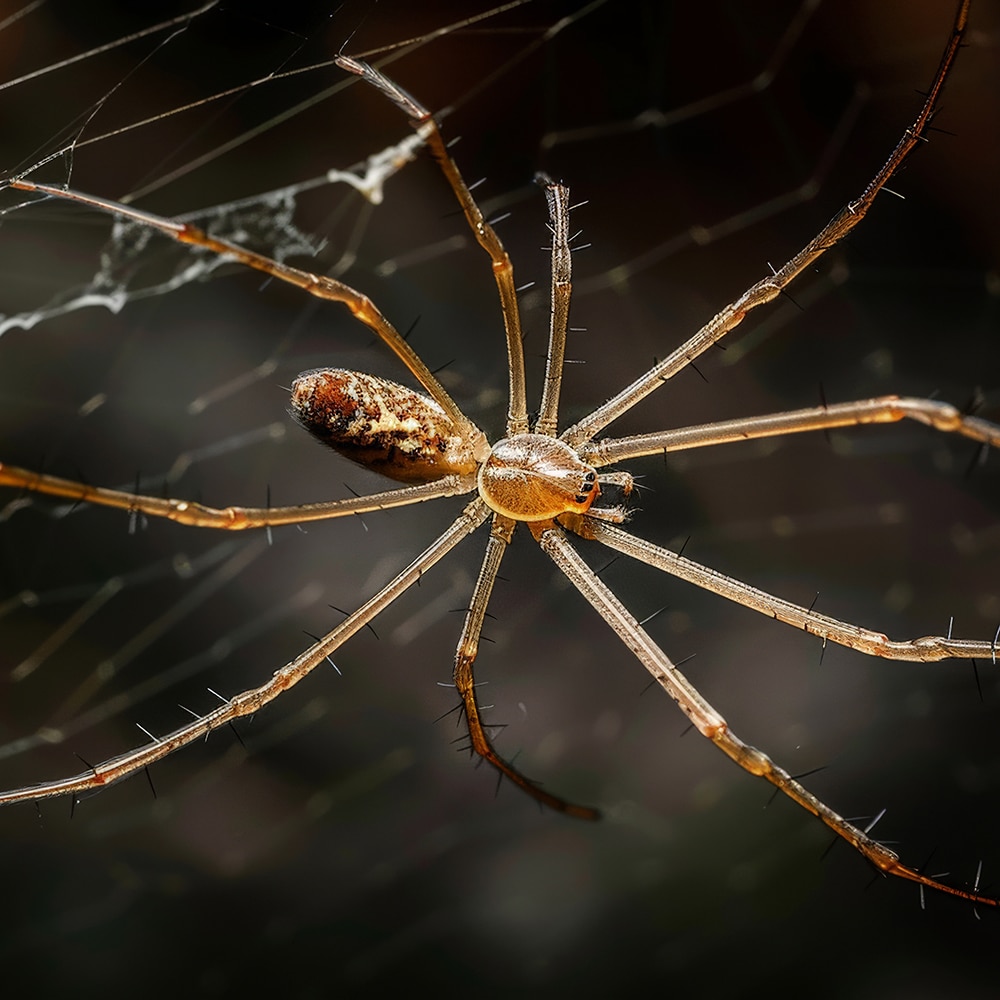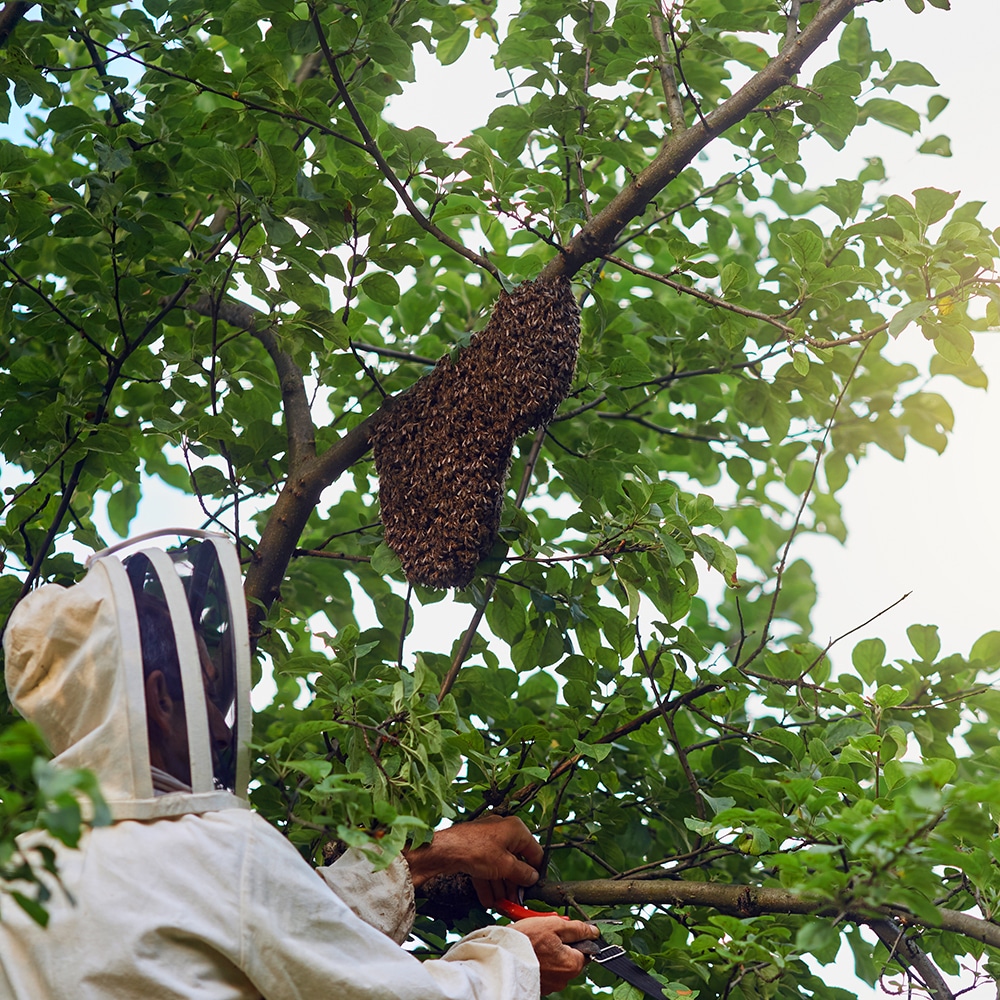
Why Do Spiders Come Back And Why
Why Do Spiders Come Back And Why On The Central Coast NSW. Responsive Proactive Solutions. Detail-focused for lasting results. Call Adam on 0431 222 894
Are you tired of dealing with spider webs and egg sacs? Discover “How to Get Rid of Spider Webs and Egg Sacs” with tips from Vital Pest Control. Let’s make your home spider-free!
Why removing spider webs is important
Spider webs signal active infestations. Removing them helps reduce spider numbers. It also keeps your home clean and inviting. Unattended webs can attract dust and other pests, making it essential to remove them promptly.
How to safely remove spider egg sacs
Spider egg sacs can hold hundreds of spiderlings. Use gloves to safely remove them. Place the sacs in a sealed bag and dispose of them outside to avoid new spiders hatching indoors.
Best tools for cleaning spider webs
Microfibre dusters and vacuum cleaners work wonders. They easily reach high corners and ceilings. These tools ensure efficient removal without leaving residue behind.
How to stop spiders from rebuilding webs
Seal entry points like cracks and gaps. Use essential oils like peppermint as deterrents. Regular cleaning keeps spiders from finding suitable spots to spin new webs.
Where do spiders hide their eggs
Spiders prefer dark, undisturbed areas. Look in corners, basements, and attics. These hidden spots are prime locations for egg sacs, so inspect regularly.
Why cobwebs indicate an active infestation
Cobwebs accumulate quickly. Their presence often means spiders are actively nesting. Regular removal helps reduce the spider population in your home.
How to use a vacuum for spider web removal
Set your vacuum to low power. Use the hose attachment to reach webs and egg sacs. This method is efficient and keeps you at a safe distance.
How to get rid of spider webs on ceilings
Use an extendable duster or vacuum with a long nozzle. These tools safely reach high spots. Regular cleaning prevents webs from forming again.
Ready to tackle your spider issues? Discover how we can help you today! Contact Vital Pest Control for reliable and trustworthy pest control solutions.

Spider webs might seem harmless, but their presence can signal a bigger problem for homes in Central Coast NSW. Removing these webs is crucial for effective pest control. By doing so, homeowners can maintain a cleaner environment and prevent potential infestations.
Preventing Spider Infestations
Removing spider webs helps disrupt the habitat that spiders rely on. When webs are frequently taken down, spiders must relocate, reducing the chances of an infestation. This proactive approach limits the number of spiders taking up residence in your home, keeping pest numbers in check.
Improving Home Aesthetics
Spider webs can make a space look neglected or dirty. Regular removal enhances the appearance of your home, creating a welcoming environment. This practice not only benefits residents but also leaves a positive impression on visitors and potential buyers.
Allergen Reduction
Spider webs can trap dust, pollen, and other allergens, impacting indoor air quality. By removing webs, you reduce these allergens, promoting better respiratory health for your family. This simple act supports a healthier living space for everyone.
Supporting Long-term Pest Control
Consistently removing spider webs is an integral part of a comprehensive pest control strategy. It complements other pest control measures, such as sealing entry points and using repellents. This holistic approach ensures more effective and sustainable pest management.
Spider egg sacs can be a nuisance, especially if they appear in your home or garden. Safely removing them is crucial to prevent the spread of spiders. Vital Pest Control on the Central Coast NSW offers effective solutions to manage these arachnid intrusions.
Identify the Egg Sacs
Spotting spider egg sacs is the first step. They often look like small, white or off-white silk balls nestled in corners or tucked away in crevices. Different spiders produce varying sac shapes, so become familiar with what to look for in your area. Early detection can significantly reduce the chance of a spider infestation.
Use the Right Tools
Gather essential tools like gloves, a vacuum cleaner, and a plastic bag. Gloves protect your hands from potential bites, while a vacuum can quickly remove sacs from hard-to-reach places. Ensure the vacuum has a disposable bag to avoid any eggs hatching inside the machine.
Dispose of the Sacs Properly
Once collected, place the egg sacs in a sealed plastic bag. Dispose of the bag in an outdoor bin to prevent any chance of the eggs hatching indoors. This simple action ensures that the spider population doesn’t rebound in your home or garden.
Consider Professional Help
If you’re overwhelmed, don’t hesitate to call Vital Pest Control. Our team provides comprehensive spider control services tailored to the Central Coast NSW. Professional help ensures complete removal, offering peace of mind and a spider-free environment.
When dealing with spider webs around your home on the Central Coast NSW, having the right tools can make the task much easier. Vital Pest Control offers insight into the best tools for efficiently cleaning spider webs, ensuring your space remains tidy and spider-free.
Extendable Dusters
Extendable dusters are indispensable for reaching high ceilings and corners where spiders often weave their webs. With a telescopic handle, these dusters can easily access hard-to-reach spots without requiring a ladder. The soft, microfibre head traps webs and dust effectively, making clean-up quick and hassle-free.
Cobweb Brushes
Cobweb brushes feature long bristles designed specifically to sweep away webs from various surfaces. Ideal for both indoor and outdoor use, these brushes are perfect for removing webs from patios, verandas, and eaves. Their lightweight design also ensures ease of movement while cleaning.
Vacuum Cleaners with Attachments
Vacuum cleaners equipped with specialised attachments can efficiently suck up webs and egg sacs. This method is particularly effective for removing webs from delicate surfaces like curtains and light fixtures. Using a vacuum also reduces the risk of spiders escaping during removal.
Having these tools at your disposal can significantly enhance your pest control efforts. For residents on the Central Coast NSW, Vital Pest Control provides additional guidance and services to ensure your home remains free of unwanted arachnid visitors.
Spiders often rebuild webs, which can be frustrating when trying to maintain a tidy home or garden. For residents on the Central Coast of NSW, keeping these pests at bay is key. Here are some effective strategies to prevent spiders from reconstructing their webs.
Regular Cleaning
Consistent cleaning is essential. Dust and vacuum regularly to remove any webs and discourage spiders from returning. Pay special attention to corners, window sills, and other secluded areas where spiders typically spin their webs. A clean space is less inviting to these creatures.
Natural Repellents
Natural deterrents like peppermint oil can keep spiders at bay. Mix a few drops with water in a spray bottle and apply it around windows, doors, and other entry points. Spiders dislike the strong scent, making it less likely for them to rebuild webs in treated areas.
Seal Entry Points
Inspect your home for cracks or openings where spiders might enter. Seal these gaps with caulk or weather stripping. Keeping spiders out is a proactive step to prevent them from constructing webs in and around your living spaces.
Outdoor Maintenance
Trim back plants and shrubs near your home’s exterior. Spiders often use these as stepping stones to enter your home. Reducing their access points can significantly decrease the chance of webs forming inside.
Spiders are fascinating creatures, especially when it comes to their egg-laying habits. On the Central Coast of NSW, various spider species display unique behaviours when concealing their eggs. Understanding these habits can be crucial for effective pest control.
In the Corners of Ceilings
Many spiders opt for high, hard-to-reach spots, such as the corners of ceilings, to hide their eggs. These locations provide safety from predators and are often overlooked by humans. By building webs in these areas, spiders ensure their egg sacs remain undisturbed.
Behind Furniture and Appliances
Dark and secluded spots behind furniture or appliances are ideal hiding places. Spiders often choose these areas due to their limited human activity and reduced light exposure, creating a perfect environment for their offspring to thrive until hatching.
In Garden Sheds and Garages
Outdoor structures like garden sheds and garages offer ample opportunities for spiders to hide their eggs. These spaces provide a relatively stable environment, protected from extreme weather and human interference, which supports the successful development of the eggs.
Within Plant Pots and Garden Beds
Spiders sometimes use plant pots and garden beds to conceal their egg sacs. The natural cover provided by leaves and soil offers excellent camouflage, protecting eggs from predators and harsh environmental conditions.
Cobwebs are often dismissed as harmless nuisances, but their presence can signal a more serious issue for Central Coast residents. If you spot cobwebs frequently in your home, it could mean you have an active spider infestation. Understanding why cobwebs are a red flag can help you take swift action.
Spiders Produce Cobwebs as a Byproduct
Spiders use silk for various purposes, including building webs to catch prey. When you see cobwebs, it often means spiders are actively hunting and reproducing in your space. These webs can accumulate quickly, especially in hidden or undisturbed areas, indicating a thriving spider population.
Frequent Webs Mean Ongoing Activity
If you notice cobwebs reappearing soon after cleaning, it’s a sign that spiders are consistently active. This constant presence points to an infestation, as new webs form when spiders continue to inhabit and breed in your home. Regularly finding fresh webs should raise concern for any homeowner.
Web Locations Reveal Spider Habits
Where you find cobwebs can offer clues about the type and number of spiders. For instance, webs in high corners or dark basements suggest a preference for secluded spots, which many spiders favour. Such patterns help pest control experts like Vital Pest Control identify specific spider species and tailor their approach.
Using a vacuum for spider web removal is a practical and efficient method for keeping your Central Coast home free from unwanted webs. This approach not only helps in tidying up but also aids in managing potential pest issues. By integrating regular vacuuming into your cleaning routine, you can maintain a cleaner, spider-free environment.
Select the Right Vacuum Attachment
To effectively remove spider webs, choose the appropriate vacuum attachment. A long, narrow nozzle is ideal for reaching corners and ceilings where webs commonly form. This tool allows you to access tight spaces without the need for ladders or stools, ensuring a safer cleaning process.
Regular Vacuuming Routine
Incorporate vacuuming into your regular cleaning schedule to keep spider webs at bay. Consistent attention will prevent webs from accumulating and discourage spiders from making your home their haven. Focus on high-traffic areas and places with less human activity, like garages or basements.
Proper Disposal of Webs
After vacuuming, ensure proper disposal of collected webs and debris. Empty the vacuum canister or replace the bag to prevent any spiders or eggs from escaping back into your home. This step is crucial in ensuring that your efforts in removing webs are long-lasting and effective.
Spider webs on ceilings can be not only unsightly but also a constant nuisance. For residents on the Central Coast of NSW, keeping these webs at bay is crucial. Vital Pest Control offers practical tips to help you manage and eliminate spider webs effectively.
Regular Cleaning Routine
Establishing a regular cleaning routine is your first line of defence against spider webs. Use a broom with soft bristles or a vacuum cleaner with an extendable hose to reach ceilings. This prevents webs from forming and removes any existing ones. Make cleaning a part of your weekly chores to keep your home inviting.
Natural Repellents
Consider natural repellents to deter spiders from making webs on your ceilings. Essential oils like peppermint or citrus can be effective. Mix a few drops with water and spray on ceilings. These scents are unpleasant to spiders but refreshing for your home.
Seal Entry Points
Inspect your home for cracks or gaps where spiders might enter. Use caulking or weather strips to seal these entry points. This proactive approach not only reduces spiders but also helps in energy efficiency.
Consult Professionals
If spider webs persist despite your efforts, it may be time to seek professional help. Vital Pest Control offers tailored solutions for the Central Coast area. Experts can assess the situation and provide targeted treatments to keep your ceilings web-free.
Cleaning windows and getting rid of spider webs can be a tricky task, especially in the charming yet humid environment of the Central Coast, NSW. The presence of spider webs not only affects the aesthetics of your home but can also invite more pests. Vital Pest Control offers insights into effective ways to clean these webs, ensuring your home remains inviting and pest-free.
Use a Long-Handled Broom
When dealing with spider webs in high corners, a long-handled broom proves invaluable. It allows you to reach those difficult spots without the need for a ladder. Sweep gently to avoid scattering debris or damaging paintwork. This method is quick and effective, helping you maintain clean, web-free corners.
Microfiber Cloth for Window Cleaning
Microfiber cloths are excellent for cleaning windows, as they trap dust and dirt without scratching the glass. Simply dampen the cloth and wipe the window surface, ensuring you cover all areas. For a streak-free finish, use a dry microfiber cloth to polish the glass once you’ve removed the webs and dirt.
Vacuum for Hard-to-Reach Areas
A vacuum cleaner with a hose attachment can help remove webs from inaccessible places. This method is particularly useful for corners where spiders often hide. Move the hose gently over the webs to ensure thorough removal. Regular vacuuming can prevent spiders from returning, keeping your home looking fresh.
Spider egg sacs can indeed hatch indoors, posing a concern for homeowners on the Central Coast of NSW. Understanding their behaviour and lifecycle is key to effective pest control. Spiders often lay eggs in hidden, undisturbed corners, making homes a prime target for these arachnids. Vital Pest Control can help you manage this issue efficiently.
Environmental Factors
Indoor conditions such as warmth and humidity can accelerate the hatching process of spider egg sacs. This is particularly true on coastal areas where the climate is conducive to spider activity. Keeping an eye on these environmental factors can help in early detection of potential infestations.
Common Indoor Hatching Sites
Spiders prefer secluded spots for laying egg sacs, often choosing areas that are rarely disturbed. Garages, basements, and attics are common sites where these sacs can be found. Regular inspections of these areas are essential to prevent hatching indoors.
Preventative Measures
Vital Pest Control recommends sealing entry points and reducing clutter to minimise the risk of spiders laying eggs indoors. Regular cleaning and vacuuming can also disrupt spider habitats. Professional pest control services can offer tailored solutions to ensure your home remains spider-free.
Spiderlings can be a real nuisance on the Central Coast of NSW. They hatch in large numbers and quickly spread, creating a web-filled environment that’s hard to manage. Understanding how to stop these tiny critters from spreading is crucial for maintaining a clean, spider-free home.
Identify and Remove Egg Sacs
Locating spider egg sacs is the first step in preventing spiderlings from spreading. These sacs often hide in corners, under furniture, or in dark, undisturbed spaces. Removing them promptly can significantly reduce the number of spiderlings. Use a vacuum cleaner with a hose attachment to safely suck up the sacs, ensuring they won’t hatch inside your home.
Seal Entry Points
Spiderlings can enter through tiny gaps and cracks. Inspect your home’s exterior for any openings, particularly around windows and doors. Use caulk or weather stripping to seal any potential entry points. This not only helps with spider prevention but also improves your home’s energy efficiency.
Maintain Cleanliness
Keeping your home clutter-free and vacuuming regularly can deter spiderlings. They thrive in messy environments where they can easily find places to hide. Regular cleaning disrupts their habitat, making it less inviting for them to spread.
Utilise Natural Repellents
Essential oils like peppermint or eucalyptus can act as natural deterrents. Mixing a few drops with water in a spray bottle and applying it to areas prone to spider activity can keep spiderlings at bay. These oils repel spiders without harming them, providing a humane solution to the problem.
Old spider webs can be a persistent issue for Vital Pest Control on the Central Coast NSW. These webs, often found in corners and hard-to-reach areas, can accumulate over time, making spaces look neglected and unclean. Not only do they diminish the aesthetic appeal of homes and businesses, but they also signal potential pest problems to visitors and customers. Addressing old spider webs effectively is crucial for maintaining a tidy and professional environment.
Impact in Property Appearance
Old spider webs hanging from ceilings and corners can make any property look unkempt. This affects not only homeowners but also businesses aiming to maintain a professional appearance. Regular cleaning is essential to ensure these webs do not accumulate and send the wrong message to visitors or clients.
Pest Attraction
Neglected spider webs can attract dust, dirt, and other insects, creating an ideal environment for spiders to return. If left unattended, these webs can become a hotspot for pest activity, complicating pest control measures. Regular removal helps in reducing the likelihood of spiders and other pests setting up residence.
Health Concerns
Accumulated spider webs can trap allergens, which may irritate respiratory conditions or allergies. Keeping spaces free of webs not only improves appearance but also contributes to a healthier indoor environment. Consistent cleaning can prevent these potential health issues from arising, ensuring a safer space.
Keeping your home free of spider webs requires consistent effort, especially on the Central Coast. Vital Pest Control offers effective strategies to manage web buildup over time. Regular maintenance not only keeps your home tidy but also deters spiders from settling in.
Regular Dusting and Sweeping
Dusting and sweeping are essential for preventing web accumulation. Use a broom with soft bristles or a duster with a long handle to reach high corners and ceilings. Pay attention to often-overlooked areas like window frames and doorways. This regular cleaning routine helps remove webs before they grow, making it less inviting for spiders to return.
Seal Cracks and Gaps
Spiders often enter homes through small openings. Inspect your property for cracks and gaps around windows, doors, and walls. Sealing these entry points with caulk or weather stripping reduces the chances of spiders entering and creating webs. This proactive approach is crucial in maintaining a web-free environment.
Use Natural Repellents
Natural repellents like peppermint oil can deter spiders. Mix a few drops with water in a spray bottle and apply it to corners and entry points. The scent discourages spiders from spinning webs in those areas. Regular application of these repellents can significantly decrease web buildup over time.
On the Central Coast of NSW, some spiders weave more webs than others due to a variety of fascinating factors. Understanding these reasons can help in effectively managing spider problems around your home or business.
Species Differences
Different spider species have unique web-building habits. Orb-weavers, for instance, are prolific in web creation, spinning intricate patterns nightly. In contrast, many ground-dwelling spiders build fewer webs, relying instead on their speed and agility to catch prey. Recognising the spider type can guide appropriate pest control strategies.
Environmental Factors
Spiders respond to their environment when deciding how often to build webs. Areas rich in insect activity can lead to more frequent web construction, as spiders aim to maximise their food supply. Weather conditions also play a role; some species increase web-building during humid conditions to take advantage of increased prey numbers.
Life Cycle Stages
A spider’s life stage influences its web-building behaviour. Juvenile spiders tend to build more webs as they grow and develop their hunting skills. Conversely, adult spiders may focus on maintaining and repairing existing webs, conserving energy for reproduction and survival.
Understanding why some spiders create more webs than others can contribute to effective pest management. By recognising species traits, environmental influences, and life stages, you can better strategise your approach to spider control, ensuring a more comfortable environment on the Central Coast.
Spider webs around lights and doorways can be a nuisance, especially on the Central Coast NSW. They not only affect the aesthetics of your outdoor space but also invite more spiders to settle. Proper prevention practices can help keep these areas free from unwanted webbing.
Install Motion-Sensor Lights
Spiders are drawn to the insects attracted by lights. By installing motion-sensor lights, you reduce the constant light source, thus minimising the attraction for insects and, consequently, spiders. This simple change can significantly decrease webbing near your doors.
Regular Maintenance and Cleaning
Consistent cleaning around your home’s exterior can deter spiders from settling. Use a broom or a high-pressure hose to remove webs frequently. This discourages spiders from returning to the same spots and helps prevent the formation of egg sacs.
Apply Natural Repellents
Utilise natural repellents like peppermint oil or vinegar around lights and doors. Spiders are repelled by the strong scents of these substances. Simply mix with water and spray the solution in targeted areas to keep spiders at bay.
Seal Gaps and Cracks
Check for and seal any gaps or cracks around doors and windows. These small openings can serve as entry points for spiders. Sealing them not only deters spiders but also improves your home’s energy efficiency.
Please leave your details in the form and we will call you back the same day.
So that we can process your enquire efficiently please leave as many details as possible and upload any relevant images. (.jpg and .png format)

Why Do Spiders Come Back And Why On The Central Coast NSW. Responsive Proactive Solutions. Detail-focused for lasting results. Call Adam on 0431 222 894

Building a Long Term Residential Pest Protection Plan For Home Owners On The Central Coast NSW. Responsive Proactive Solutions. Detail-focused for lasting results. Call Adam on 0431 222 894

How to Protect Your Home from Wasp Infestations On The Central Coast NSW. Responsive Proactive Solutions. Detail-focused for lasting results. Call Adam on 0431 222 894